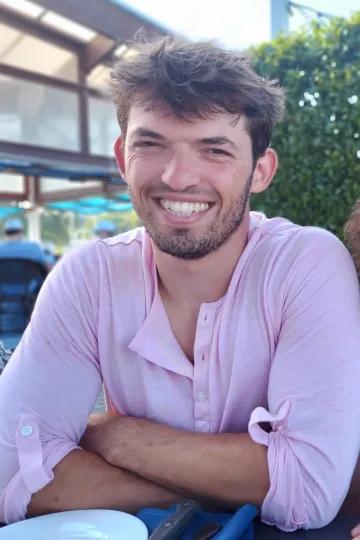When
Where

Presenter: Rafi Chesler, Graduate Student, Department of Physics, University of Arizona
Abstract: Development of high-efficiency solar cells represents one of the primary avenues toward transitioning global energy dependence to renewable means that can satisfy constantly increasing energy demands. Organic photovoltaics are a strong candidate for providing the foundation for such technology due to their relative abundance, low cost, and advantageous material properties. Still, there remains much work to be done toward realizing efficient implementation of candidate materials in next generation solar cell technology. We present results of many-body calculations, together with analysis of experimental evidence, on several organic dimers that may be strong candidates for singlet fission-based materials. Singlet fission (SF) is a multichromophore process in which a single photoexcitation can generate four instead of just two charge carriers, effectively doubling the potential maximum efficiency in materials that exhibit SF. However, the complicated multi-step dynamics and various competing pathways that may compromise SF in a given molecule make it difficult to both characterize the nature of the individual steps and identify candidate materials. By performing high order calculations in which we retain the many-body nature of the low energy states thought to mediate SF and comparing with experimental signatures, we determine for the first time the mechanism of the SF process which also provides a diagnostic tool for fast identification of potential high efficiency SF-based materials.
Parenti, K.R., Chesler, R., He, G. et al. Quantum interference effects elucidate triplet-pair formation dynamics in intramolecular singlet-fission molecules. Nat. Chem. (2022). https://doi.org/10.1038/s41557-022-01107-8
Bio: Rafi received a BS in physics and mathematics from SUNY Binghamton in 2015 and is currently pursuing a PhD in physics at the University of Arizona. He works with Professor Sumit Mazumdar on correlation effects in organic molecules with applications to singlet fission.






